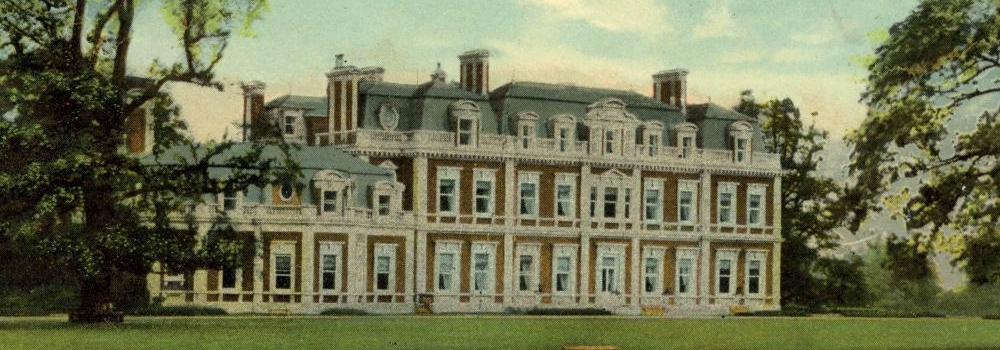The origins of the name 'Rothschild'
The family take their name from the house they occupied in the Judengasse in Frankfurt; pictorial representations of names were engraved or painted onto keystones and doors, and people often retained their names, and emblems, when they moved to another house.
The name can be traced back to a sixteenth-century ancestor of Mayer Amschel Rothschild (1744-1812), Isaak Elchanan, who took the name Rothschild from a small house he occupied at the southern end of the Judengasse called zum Roten Schild (‘House at the Red Shield’). The practice of using surnames was well established in Germany by the 1500s, and when his grandson, Naftali Hirz moved to the Hinterpfann (a tenement in the back of a house at the northern end of the Judengasse) in 1664, he took the name Rothschild with him. Frankfurt Jews were officially required to adopt surnames by the Grand Duchy of Frankfurt in 1807. Such laws were passed in order to improve the governability and taxability of the Jewish population.
By the early 18th century there were ten or twelve Rothschild families in Frankfurt. Mayer Amschel Rothschild was born in the Hinterpfann in 1744. He lived here throughout his childhood and much of his married life, until, in 1784, together with his wife Gutle and their first five children, he was able to buy a larger house in the Judengasse; this property was known as the ‘House at the Green Shield’. It was here that Mayer and Gutle's ten children grew up, their five sons to become the future bankers to European monarchs and governments.
The Rothschild Coat of Arms
The five sons of Mayer Amschel Rothschild were placed on the first rung of the nobility by the Austrian Emperor in 1817. They were granted the right to armorial bearings, and to use the suffix 'von' in their names. Those members of the family living in Frankfurt and Vienna were thus known as von Rothschild, whereas the Paris, and later the Naples, branches of the family adapted this to the French style 'de'. In England, Nathan Mayer Rothschild eschewed 'foreign' titles, and is reputed to have declared that "plain Mr Rothschild" was good enough for him. A letter in the Archive from Amschel to Salomon and Nathan in November 1816 reads, ".....James and Carl received the nobility. It is a pity that Nathan did not want it." Nathan’s sons thought differently, and in 1818 successfully applied to use the Austrian title, using the French style ‘de’ rather than the German one.
In 1822 the Rothschild brothers were awarded an Austrian Barony granted by Imperial Decree. The Barony was granted to the five brothers and their heirs and descendants of both sexes. The design for the arms was modified at this stage to include a seven-pointed coronet, and there were five arrows, the lion and unicorn as supporters, three helmets and a latin motto: 'Concordia, Integritas, Industria' (Harmony, Integrity, Industry).
'Five arrows'
The five arrows became an enduring symbol of the Rothschild name. The story comes from ancient Chinese myth and also is told by Plutarch of a wealthy man who, on his deathbed, asked his sons to break a bundle of darts. When they all failed, he showed them how easily the arrows could be broken individually, cautioning them that their strength as a family lay in their unity.
Many members of the Rothschild family began to adopt the motif on letterheads, bookplates, porcelain, and jewellery. Some individuals preferred to see the arrows pointing upwards, in spite of the official description of the arrows approved by the Austrian heralds of arms. Although this was purely a matter of personal choice, a cross-channel split of opinion began to develop. The French family and bank gradually adopted 'arrows up' for all uses of the symbol, while the English remained faithful to the 'arrows down' version.
In 1885, Nathaniel de Rothschild became the first Jewish peer. Somewhat unusually, he chose his own name as his title, and became Lord Rothschild (of Tring Park). Thereafter in England, descendants of Lord Rothschild have not used the suffix ‘de’, whereas descendants of the first Lord Rothschild's brothers have continued to use 'de'.






















